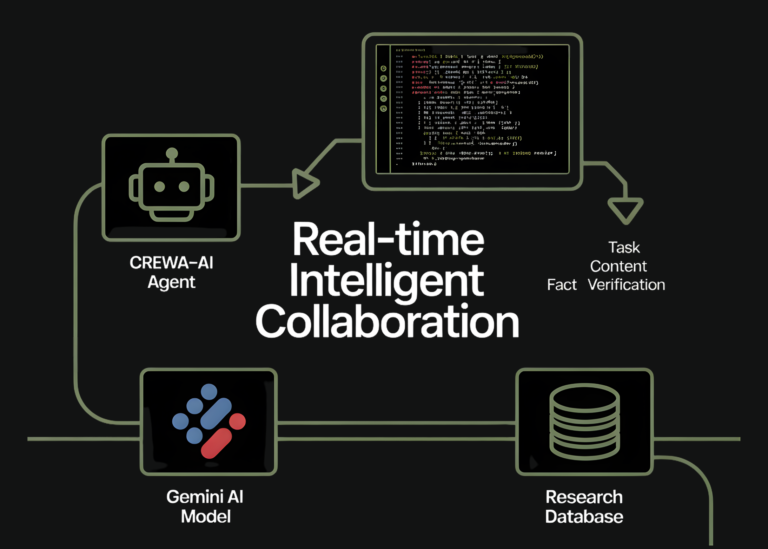AI Tools for Improving Inventory Management Systems: A Transformative Approach for Modern Businesses
In today’s fast-paced business environment, efficient inventory management is critical to maintaining profitability, customer satisfaction, and operational agility. Traditional inventory systems, often reliant on manual processes or basic software, struggle to keep up with the complexities of modern supply chains, fluctuating consumer demand, and global disruptions. Artificial Intelligence (AI) is emerging as a game-changer, offering advanced tools to optimize inventory management, reduce waste, and enhance decision-making. From predictive analytics to automated tracking, AI is revolutionizing how businesses handle their stock, enabling smarter, data-driven strategies.
The Challenges of Traditional Inventory Management
Conventional inventory systems face several hurdles:
- Demand Forecasting Errors: Relying on historical data and manual analysis leads to inaccuracies, causing overstocking or stockouts.
- Manual Tracking Inefficiencies: Human errors in data entry, scanning, or monitoring can result in inventory discrepancies.
- High Holding Costs: Excess stock ties up capital, while understocking leads to lost sales and dissatisfied customers.
- Supply Chain Disruptions: Global events like pandemics or shipping delays make it harder to maintain optimal inventory levels.
These challenges underscore the need for smarter, more adaptive solutions. AI tools address these pain points by leveraging data, automation, and real-time insights.
Key AI Tools Revolutionizing Inventory Management
1. Machine Learning for Demand Forecasting
Machine learning (ML) algorithms analyze vast datasets—including historical sales, seasonal trends, market conditions, and even social media sentiment—to predict demand with remarkable accuracy. For example, retailers like Walmart and Amazon use ML models to anticipate product demand, ensuring they stock the right items at the right time. These systems continuously learn from new data, improving forecasts as they go.
Benefits:
- Reduces overstocking and stockouts.
- Enables dynamic pricing and promotional strategies.
- Adapts to sudden changes in market conditions.
2. Computer Vision for Real-Time Inventory Tracking
AI-powered computer vision uses cameras and image recognition to monitor inventory levels in real time. This is particularly useful in warehouses and retail stores, where it can automatically detect when stock is running low or when products are misplaced. For instance, companies like Alibaba and Target have implemented smart shelf cameras to track inventory accuracy and streamline restocking.
Benefits:
- Minimizes manual audits and labor costs.
- Improves accuracy in tracking physical stock.
- Enhances visibility across multi-location operations.
3. Predictive Analytics for Stock Optimization
Predictive analytics uses AI to analyze patterns and predict future outcomes. By integrating data from suppliers, sales, and logistics, these tools help businesses determine optimal reorder points, lead times, and safety stock levels. Platforms like SAP and Oracle now offer AI-driven analytics to help companies balance supply and demand more effectively.
Benefits:
- Reduces excess inventory and associated costs.
- Prevents stockouts by anticipating delays or spikes in demand.
- Supports just-in-time (JIT) inventory strategies.
4. Robotics and Automated Warehousing
AI-powered robotics, such as autonomous mobile robots (AMRs) and robotic process automation (RPA), are transforming warehouse operations. These tools can pick, pack, and transport goods with precision, while AI systems manage inventory placement and movement. Companies like Amazon and DHL use robots to accelerate order fulfillment and reduce human error.
Benefits:
- Increases warehouse efficiency and scalability.
- Speeds up order processing and reduces labor costs.
- Enables 24/7 operations with minimal downtime.
5. Natural Language Processing (NLP) for Customer and Supplier Interaction
NLP allows AI to understand and respond to human language, making it ideal for managing customer inquiries or supplier communications. For example, chatbots powered by NLP can handle stock inquiries, while AI-driven tools analyze supplier contracts and communications to identify risks or opportunities.
Benefits:
- Improves customer service with instant responses.
- Streamlines supplier interactions and negotiations.
- Reduces administrative workload for teams.
How AI Enhances Inventory Management
AI tools offer a range of advantages that traditional systems cannot match:
- Cost Reduction: By minimizing overstocking, understocking, and manual labor, businesses save on storage, waste, and operational expenses.
- Improved Accuracy: Real-time data and automated systems reduce human errors, ensuring inventory records are up-to-date and reliable.
- Enhanced Customer Experience: Accurate stock availability and faster order fulfillment lead to higher customer satisfaction and loyalty.
- Scalability: AI adapts to business growth, handling complex inventory networks across multiple locations or global markets.
- Sustainability: Optimized stock levels reduce excess production and waste, aligning with eco-friendly business practices.
Real-World Applications Across Industries
- Retail: AI helps manage seasonal inventory, ensuring popular items are in stock during peak times. For example, Zara uses AI to predict trends and adjust inventory in real time.
- E-commerce: Platforms like Shopify integrate AI tools to manage vast product catalogs and streamline fulfillment processes.
- Manufacturing: AI predicts equipment failures and manages raw material orders, preventing production delays.
- Logistics: Companies like FedEx use AI to track shipments and optimize warehouse layouts for faster processing.
Challenges and Considerations
While AI offers significant benefits, its implementation requires careful planning:
- Data Quality: AI systems rely on accurate, up-to-date data. Incomplete or outdated data can lead to flawed predictions.
- Integration Costs: Retrofitting existing systems with AI tools can be expensive and complex.
- Employee Adaptation: Staff may need training to work alongside AI-driven processes.
- Security Risks: Handling sensitive inventory and supply chain data demands robust cybersecurity measures.
The Future of AI in Inventory Management
The future of inventory management will likely involve more advanced AI capabilities, such as:
- AI-Driven Blockchain: Combining AI with blockchain could create transparent, tamper-proof inventory records.
- Autonomous Supply Chains: AI systems that self-optimize, from demand prediction to supplier selection.
- Edge AI: Processing data locally in warehouses or retail locations for faster, real-time decisions.
Conclusion
AI tools are no longer a luxury but a necessity for businesses aiming to stay competitive. By automating tasks, predicting demand, and optimizing stock levels, AI transforms inventory management into a strategic asset. As technology evolves, the integration of AI will become even more seamless, enabling businesses to adapt quickly to market changes, reduce costs, and meet customer expectations with unprecedented precision. Embracing AI is not just about keeping up with trends—it’s about future-proofing operations in an increasingly automated world.







